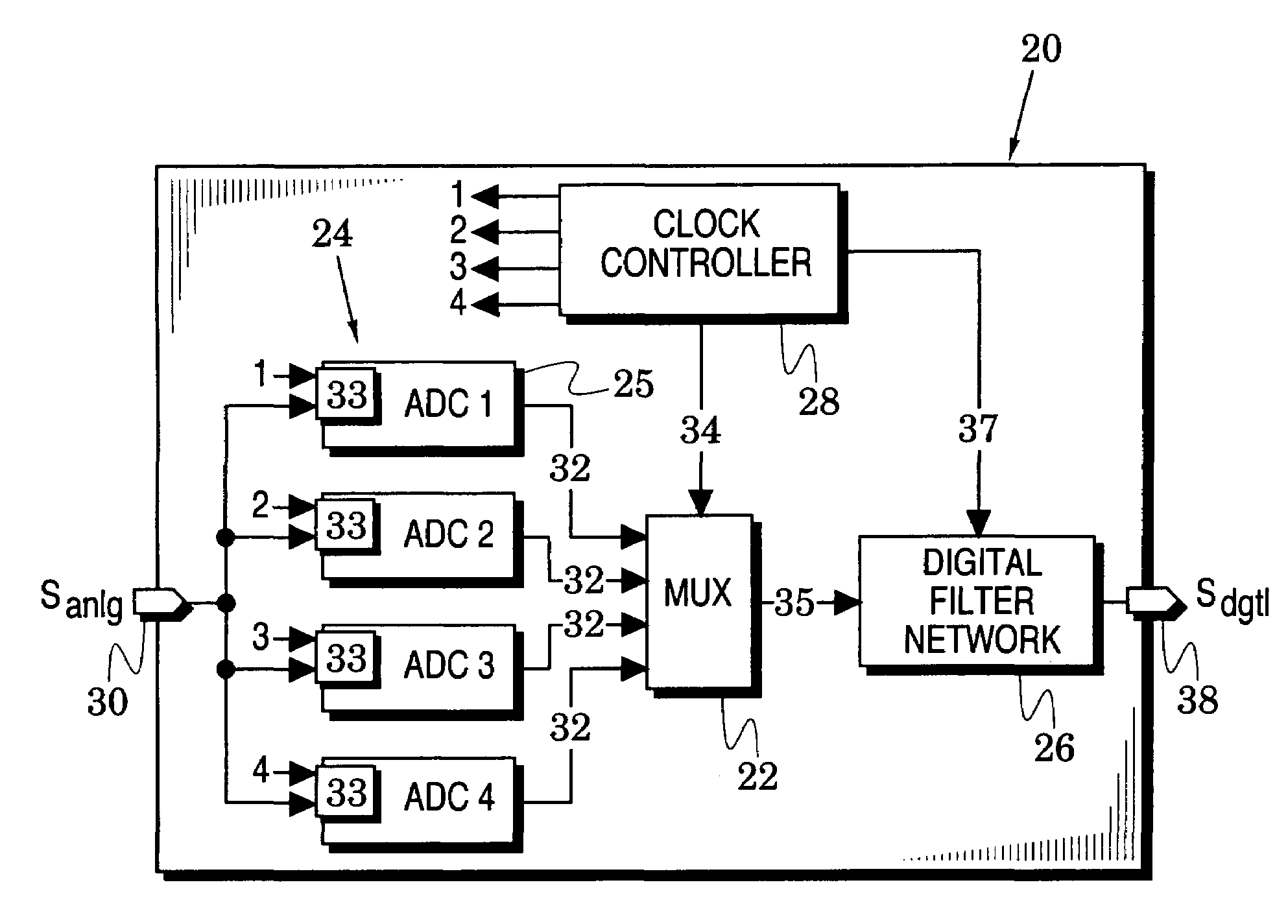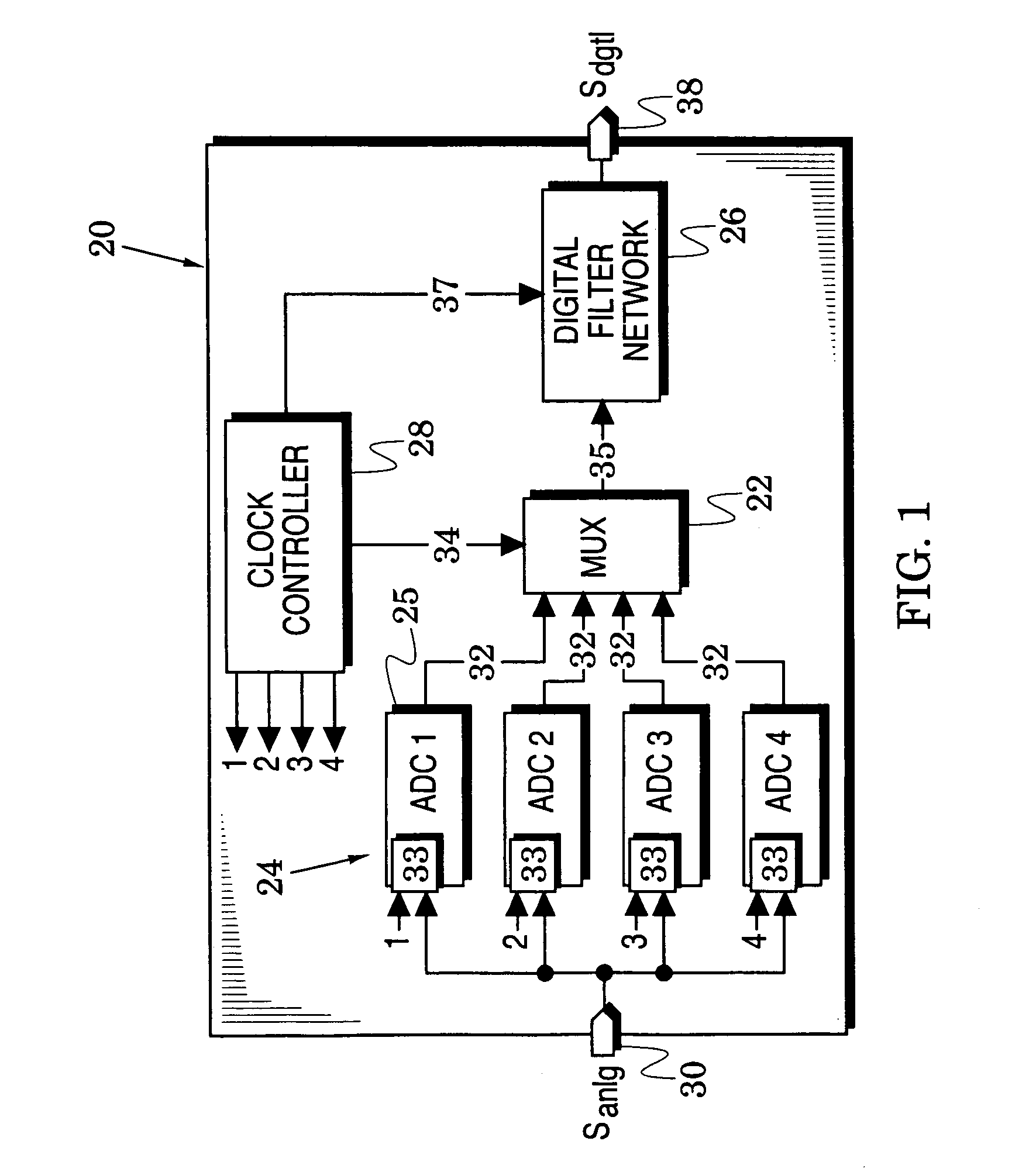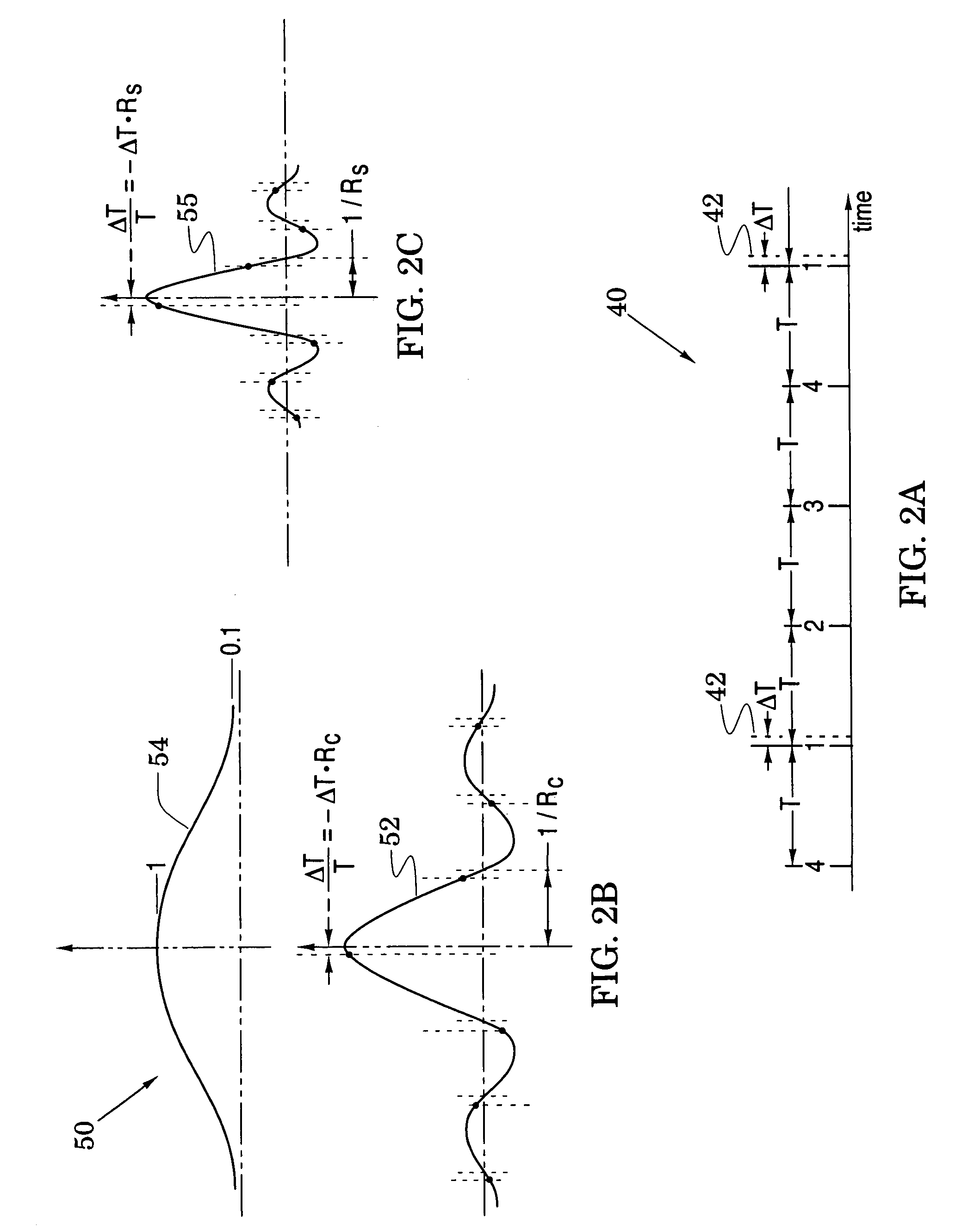Time-interleaved signal converter systems with reduced timing skews
a signal converter and time-interleave technology, applied in transmission systems, instruments, code conversion, etc., can solve the problems of affecting the accuracy of the system's digital output sequence, so as to reduce the timing skew
- Summary
- Abstract
- Description
- Claims
- Application Information
AI Technical Summary
Benefits of technology
Problems solved by technology
Method used
Image
Examples
Embodiment Construction
[0014]FIGS. 1–4B illustrate time-interleaved signal converter systems that multiplex respective digital sequences of system converters into an interleaved digital sequence before filtering each respective digital sequence with digital filters that apply respective filter coefficients to thereby reduce system degradation caused by converter timing skews. Use of the interleaved digital sequence in the filtering process substantially increases the system bandwidth from approximately one half of the converter sample rate RC to approximately one half of the greater system sample rate RS.
[0015]Each respective digital sequence is thus interleaved with respective digital sequences that correspond to other converters. With respect to each converter, the other respective digital sequences contain errors because they generally only approximate the sequences which would have been obtained had the respective converter's sampler operated at exactly the system sample rate RS.
[0016]Therefore, some ...
PUM
 Login to View More
Login to View More Abstract
Description
Claims
Application Information
 Login to View More
Login to View More - R&D
- Intellectual Property
- Life Sciences
- Materials
- Tech Scout
- Unparalleled Data Quality
- Higher Quality Content
- 60% Fewer Hallucinations
Browse by: Latest US Patents, China's latest patents, Technical Efficacy Thesaurus, Application Domain, Technology Topic, Popular Technical Reports.
© 2025 PatSnap. All rights reserved.Legal|Privacy policy|Modern Slavery Act Transparency Statement|Sitemap|About US| Contact US: help@patsnap.com



